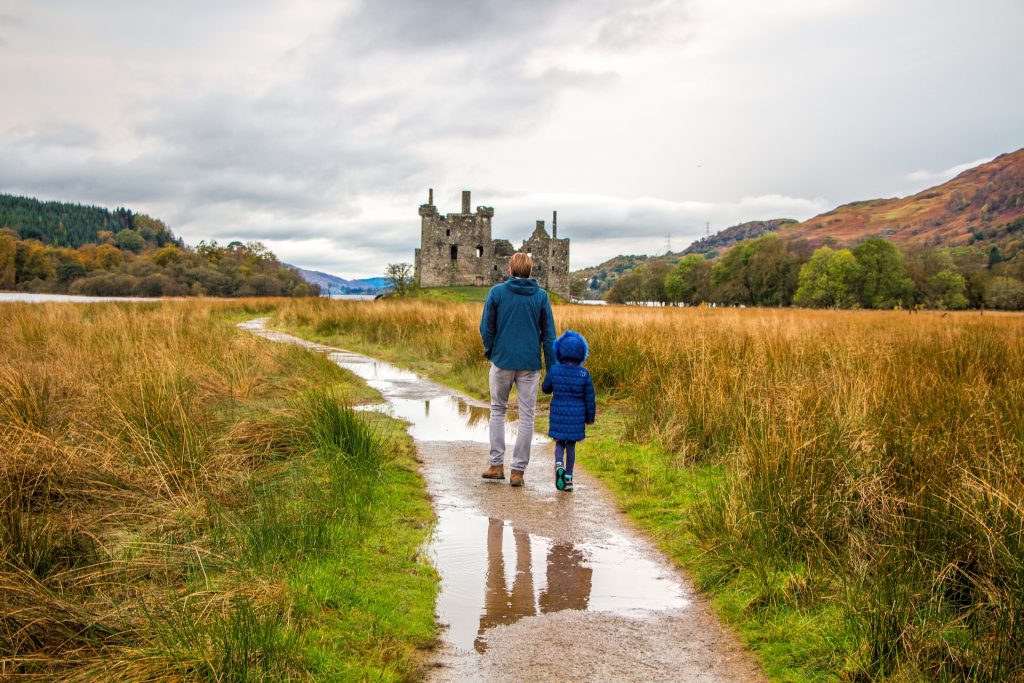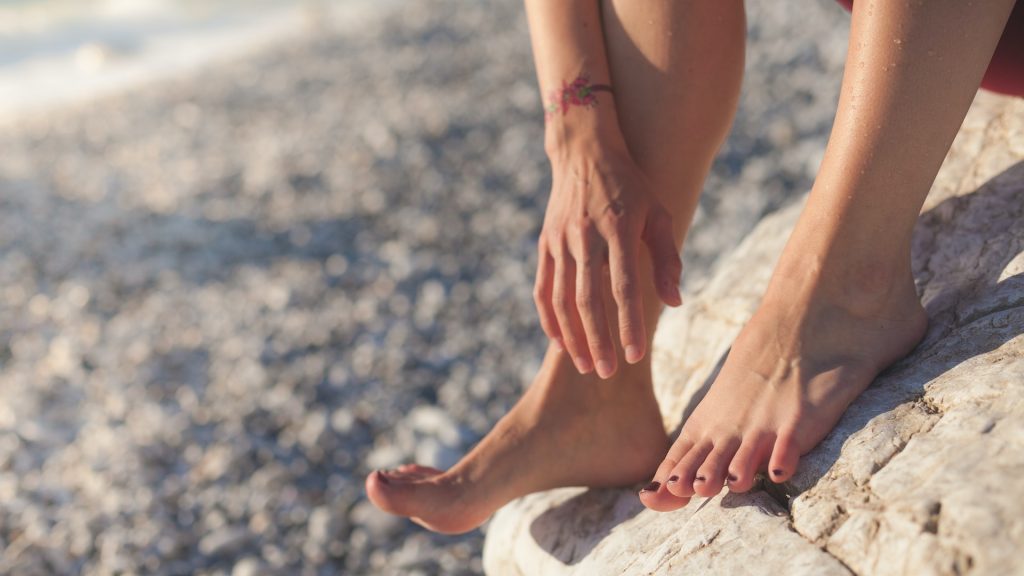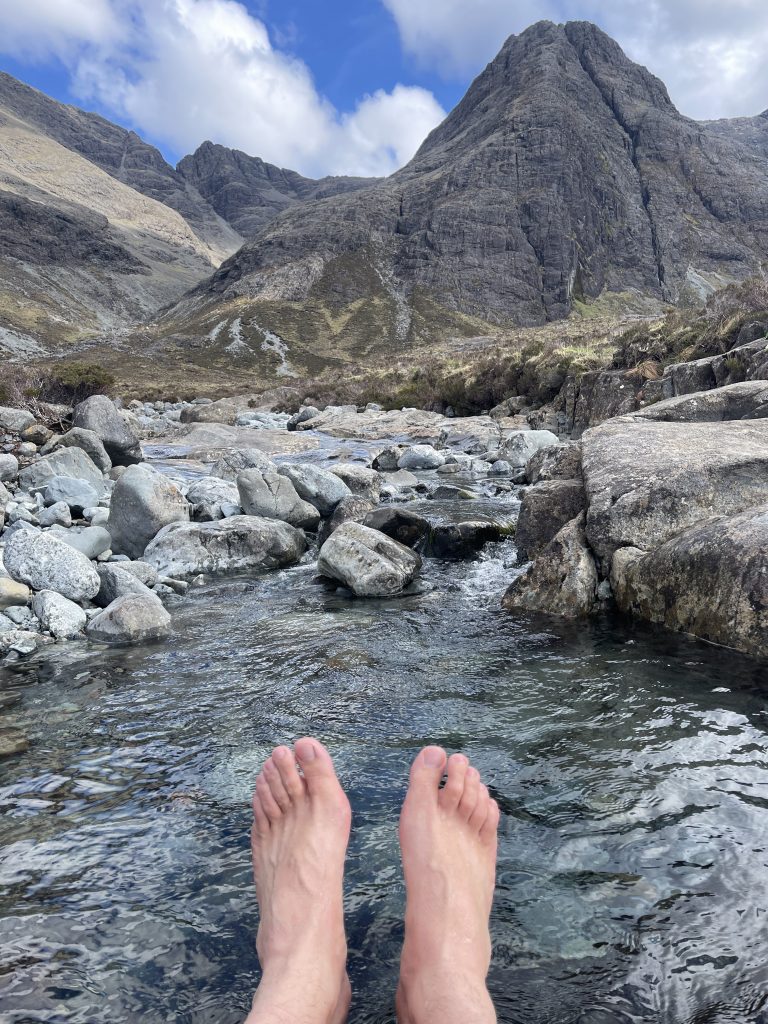There’s an age-old discussion about which kind of shoes one should bring on to a trail. Especially when it is certain that the terrain will be muddy or wet. Here’s something I’ve learned trekking in Scotland.

Some geographers insist on calling the huge sponge that lays between the Atlantic Ocean and the North Sea – “Scotland”. It also happens to be a real hiker’s paradise, with its stunning views that tend to change with seasons and the (somewhat chaotic – ) weather and it’s famous right of way laws that virtually allows you to pass through (nearly) any terrain and sleep (almost) everywhere.
Scotland is wet. Very wet. Perhaps one of the wettest places on earth but it’s not the only place on earth that is so. Iceland, anything asian and prone to monsoon, parts of South America and Africa that are covered in rainforest are just as wet and rainy. These regions also harbour some of the best hiking trails in the world.
So how can you deal with all this water falling from the sky or just flowing under your hiking feet?
There are basically, two approaches:
- Try to avoid water at any cost and use waterproof shoes
- Do the opposite – let your feet get wet
The amount of ink or pixels spent on this discussion is simply mind-blowing. I’ll be very mildly surprised if such discussions were to be found in ancient Sanskrit scriptures or in the Talmud. I know for fact there’s a passage about “the attitude in case of storm” mentioned in the Japanese samurai guide – the Hagakure (It sides with option 2 if you’re curious)
Generally speaking, the “which shoes should I bring on the trail” is a very personal matter for everyone. Even if I believe in all my heart that “my way is the right way” – Another hiker would prefer the opposite way and he’s not necessary wrong or ignorant. It’s a (strong) preference like how you like your Whisky – with or without a dash of water / Ice / an “e” in the name of the drink etc. For each their own way. Just do not judge.
The primary human instinct upon encounter with the Scottish bog or any other “dodgy” wet terrain that one knows exists on the trail would be to adorn one’s feet with the latest in the waterproof technologies known to mankind. Usually we’re talking about something very Gore-tex-y or any other waterproof membrane.
I did the same, once. And got horrid blisters.
But after several treks and 2 crossings of Scotland by foot and after meeting with enough old and wise Scots (some of which are legendary trekkers) – My method for anywhere wet is simply adopting the Scottish zen attitude – You can’t beat it, don’t bother.
The thing is, if you hike long enough in Scotland, your feet will get wet. No matter what you do. And wet feet can be a serious problem. Here’s why:
Other than being simply unpleasant at times wet feet tend to become blistery. And blisters are very bad news for hikers. I’ve seen experienced tough hikers retiring not once from a long distance hike because of blisters. They can cause excruciating pain and your feet are your most valuable asset on a hike. Happy feet make happy hikers.

What happens when your feet get soaked? Your skin becomes softer and even the usual small chafes and rubs that won’t do much effect on a dry foot – get really amplified when water (more so when the water is muddy / with small particles) is involved. Look at your hands and feet after a long soak in a bath – now imagine what will happen if you rub all this in a wet cloth (your socks) against a relatively rigid surface (your shoes) – You’ve guessed it – nasty blisters.
Understanding the problem is one thing. Solving it, is a whole other matter.
Most people tell themselves that waterproof shoes could save them from wet feet. It is true to some extent – if you’re not walking on a particularly wet terrain, not walking too long (only few hours) or if rain is just a distant probability – this could be a very good solution. In most of other case – Waterproof shoes could rapidly become part of the problem. Not the solution.
Here’s how waterproof shoes compare to non waterproof ones:
- They are significantly heavier.
- They are by nature, way less “breathing”
- When they actually do get wet inside (from water eventually getting in or simply sweat) – they take way longer to dry
The last point is pretty crucial – You will sweat way more in a waterproof shoe compared to an “aired / breathing” one. This is a self-explanatory. If you happen to step in bog – water could and will – get in your shoes from the top. If it rains A LOT water will eventually get it because very few membranes are actually completely waterproof for more than a few hours. In most cases, waterproof shoes will take many many long hours to dry. Depending on the weather, and the means you use – some would take even 48 hours to get completely dry. Wheres some non-waterproof ones usually take just a few hours. (2 to 4 in most cases)
The method I’ve seen most old Scottish trekkers use is to just “give-in” but give in smartly:
They use non-waterproof shoes with breathing (relatively thick) socks and then just walk virtually everywhere – bog, wet-heather, get in and out of streams and rivers etc – without worrying too much. Once they’ve gotten wet feet, they just continue along the trail like that for no more than 2.5 hours. Then they do a special thing. They just call it a “break” but me, not being Scottish (unfortunately), I call it “The Scottish break” and this is how it goes:
- They find a nice spot, usually next to a small stream
- They take off their shoes, “open” them as much as possible and take out the inner soles which they carefully lay next to the shoe facing towards the sky.
- They take of their socks and squeeze as much water as possible out of them, then –
- Plant their trekking poles in the ground and pull their socks over the top so they’ll get more wind and partially dry
- They soak their feet in the stream and if there is no stream – they make sure their feet are properly cleaned from any mud or small particles that could chafe their skin. Usually the water is ice cold and the soaking lasts no more than 5 minutes – This is actually very good for your feet as it cools your skin significantly.
- They dry their feet properly and wait for the skin to become smooth again. Usually they use Nok balm, a bit of vaseline or any other oily balm right after the drying after the soaking in the stream.
- If they notice any redness or chafing on the feet they apply some sturdy mater resistant Leukoplast straight on the problematic areas. This acts a bit like “second skin” and is very efficient in stopping blisters from developing (provided you catch the chafing in time)

All in all, the “Scottish break” lasts at least 25 minutes. The aim is to leave your feet dry for at least 20 minutes after the soaking in the stream. If it looks like the rest of the trail will be relatively dry – this could be a good opportunity to use a dry pair of socks. If not – put on the wettish socks back on and get on your way. The most important rule is:
Do the first break after no more than 2.5 hours since your feet got wet – repeat every 2 hours. (And as long as your feet are still wet) DO NOT skip breaks. They really are necessary to keep you out of blister’s harm’s way.
How efficient is this method? Well, back in May of 2018 I’ve crossed Scotland on foot from the Atlantic Ocean all the way to the North Sea. (TGOC) It wasn’t very rainy but I got my feet seriously wet and I didn’t stop for Scottish breaks at all. Got serious blisters. Had to do a “zero day” in Kingussie that messed all my forward bookings, had to take pain killers and change bandages everyday. Learned of the method 2 days before the end of my crossing from two old Scots sitting with their socks on their trekking poles by a stream looking very gleeful. They were fellow TGO challengers and their feet looked pristine. I barely made it to Stonehaven my finishing point. My feet looked awful. Four years later, in 2022 I’ve crossed Scotland again, on a much harder and wetter path. It was also one of the most horrendous months of May in terms of rainfall and storm. I “Scottish broke” all along the way –
Not a single blister.